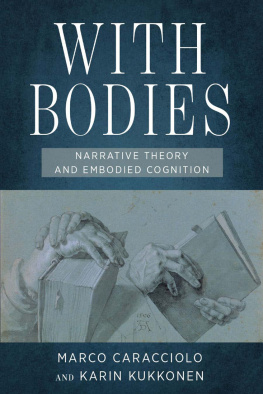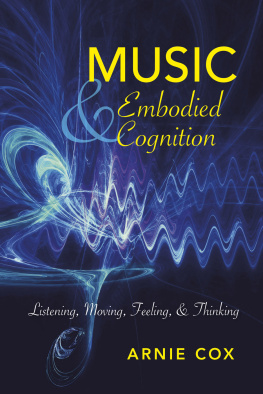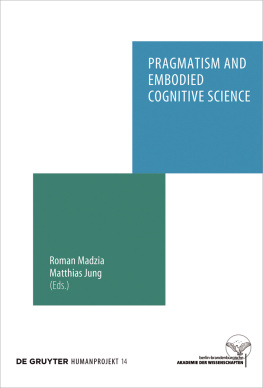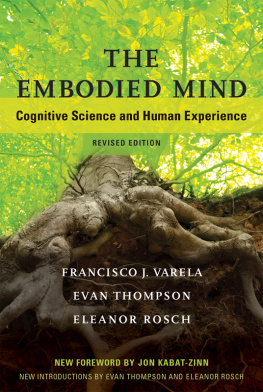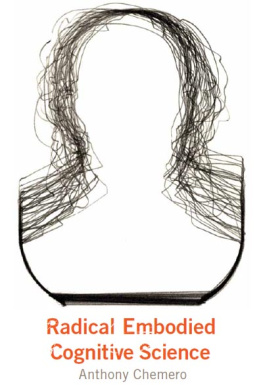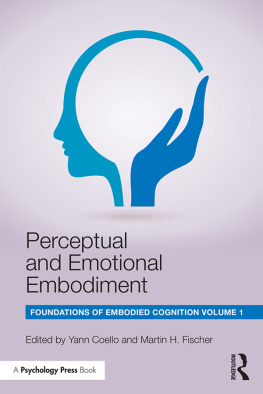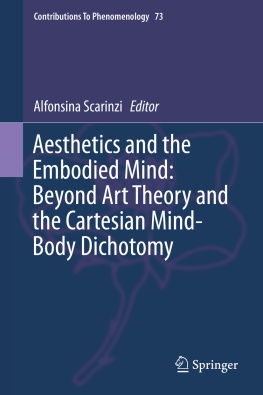Landmarks

WITH BODIES
THEORY AND INTERPRETATION OF NARRATIVE
James Phelan, Katra Byram, and Faye Halpern, Series Editors

Copyright 2021 by The Ohio State University.
All rights reserved.
Library of Congress Cataloging-in-Publication Data
Names: Caracciolo, Marco, author. | Kukkonen, Karin, 1980 author.
Title: With bodies : narrative theory and embodied cognition / Marco Caracciolo and Karin Kukkonen.
Other titles: Theory and interpretation of narrative series.
Description: Columbus : The Ohio State University Press, [2021] | Series: Theory and interpretation of narrative | Includes bibliographical references and index. | Summary: Pairs a broad range of literature-narratives from antiquity to the present composed in various languages, from Apuleiuss Metamorphoses to Hilary Mantels Wolf Hallwith recent research in neuroscience, cognitive psychology, cognitive linguistics, and philosophy of mindProvided by publisher.
Identifiers: LCCN 2021013409 | ISBN 9780814214800 (cloth) | ISBN 0814214800 (cloth) | ISBN 9780814281611 (ebook) | ISBN 0814281613 (ebook)
Subjects: LCSH: Cognition in literature. | LiteratureHistory and criticismTheory, etc. | Human body in literature. | Cognitive psychology. | Philosophy of mind in literature. | Narration (Rhetoric)Philosophy.
Classification: LCC PN56.B62 C38 2021 | DDC 809/.93353dc23
LC record available at https://lccn.loc.gov/2021013409
Cover design by Jordan Wannemacher
Text composition by Stuart Rodriguez
CONTENTS


This book is the fruit of a decade-long collaboration. The idea of coauthoring a book on an embodied narratology dates back to 2013 and was inspired by coediting a special issue of the journal Style (2014) on second-generation cognitive narrative theory. We developed this book project against a variety of geographical backdrops, from an airport hotel near LAX to cafs in Stockholms Djurgrd and the Mediterranean island of Gozo, or working from our respective homes in Belgium and Norway. Many of these discussions were enabled by the International Society for the Study of Narrative (ISSN). We are deeply grateful to the societys members for their generous and stimulating input as we presented ideas growing out of this book over the years. We are similarly indebted to the contributors of the 2014 Style issueLars Bernaerts, Marco Bernini, Aneka Kuzmiov, Sabine Mller, and Emily T. Trosciankofor engaging in extended dialogue with us. Merja Polvinen has also joined the ranks of this second-generation group, offering energetic and astute feedback throughout the writing process. Federico Pianzola and Gisle Sapiro have commented on individual chapters. The Literature, Cognition and Emotions group at the University of Oslo read the final section and served as a sounding board, encouraging our ambition to make our project relevant beyond narratology. James Phelan, Faye Halpern, and an anonymous reviewer read multiple drafts of this book and provided us with exceptional editorial advice and narratological insight.
Ghent University and the Department of Literature, European Languages and Area Studies (ILOS) at the University of Oslo gave generous publication subventions. A more comprehensive version of the section World Literature and Translation in . Harmans translation first appeared in the New York Review of Books in September 2011.

In the beginning of If on a Winters Night a Traveler, Italo Calvino carefully sets the scene for the reading experience of his intensely metafictional novel:
Find the most comfortable position: seated, stretched out, curled up or lying flat. Flat on your side, on your back, on your stomach. In an easy chair, on the sofa, in the rocker, the deck chair, on the hassock. In the hammock, if you have a hammock. On top of your bed, of course, or in the bed. You can even stand on your hands, head down, in the yoga position. With the book upside down, naturally.
Of course, the ideal position for reading is something which you can never find. In the old days, they used to read standing up, at a lectern. People were accustomed to standing on their feet, without moving. They rested like that when they were tired of horseback riding. Nobody ever thought of reading on horseback; and yet now the idea of sitting in the saddle, the book propped against the horses mane, or maybe tied to the horses ear with a special harness, seems attractive to you. With your feet in the stirrups, you should feel quite comfortable for reading; having your feet up is the condition for enjoying a read.
Well, what are you waiting for? Stretch your legs, go ahead and put your feet on a cushion, on two cushions, on the arms of the sofa, on the wings of the chair, on the coffee table, on the desk, on the piano, on the globe. Take your shoes off first. If you want to, put your feet up; if not, put them back. Now dont stand there with your shoes in the one hand and the book in the other. (1981, 34)
Calvino addresses his readers and makes a number of suggestions, in ascending absurdity, on where and in what position they might read his book. When read in sequence with the injunction to shut out any distracting noises that comes before this passage and the suggestion to adjust the brightness of the reading light that comes after, Calvinos instructions on how to position yourself as a reader might easily get swallowed up in an account of the postmodern playfulness and levity that pervades the book. Yet do we really read this passage at arms length, as it were, or is there something more interesting going on? Do we not take Calvinos guidance in imagining the upside-down yoga position? He carefully builds up the bodily aspect of reading, drawing attention to the way the readers body is positioned while reading (seated, stretched out, curled up or lying flat) and the body parts involved (your side, your back, your stomach). If the current accounts of language comprehension in cognitive science are correct, you should understand Calvinos description through some kind of embodied echo of these positions, by mentally modeling the surroundings of the you and his or her bodily contortions. Cognitive scientists refer to these processes as motor resonance (for the echo) and situation models (for readers imaginative reconstruction of what happens in the story). By the end of the paragraph, Calvino has his readers upside down, imagining themselves in the yoga position. This embodied simulation (to use another technical term from cognitive science) draws readers into the physical setup of the fictional world. The punchline of the paragraph (With your book upside-down, naturally) derives its salience from this strategy: Calvino talks about standing on ones hands and head down, drawing his readers in, immersing them in the reading experience and making them forget about the book they are supposed to be holding until he decides to bring it back to their attention.
Ironically, when we are most immersed in the reading experience, we are most liable to forget the physical surroundings in which we are reading, and the act of reading itself. The situation models, motor resonance, and embodied simulations of readers are necessary for achieving this immersion, and Calvino builds these up beautifully in the quotation above. He moves his readers and their bodily awareness around at will, immersing them in his linguistic construct. In the final paragraph, he directs readers repeatedly to put their feet up on various furniture items, evoking a range of different scenarios in the readers imagination. Only when he specifies what is in our hands (the book and the shoes), do we realize how the written text has directed our attention away from our initial goal: finding a comfortable position from which we can let go of our actual body and surroundings to begin imagining a fictional reality. Through the mirror of metafiction, literary readingan activity long seen as removed from the domain of the body and connected to intellectual and philosophical pursuitsis thus shown to be deeply reliant on the body for its effects.

